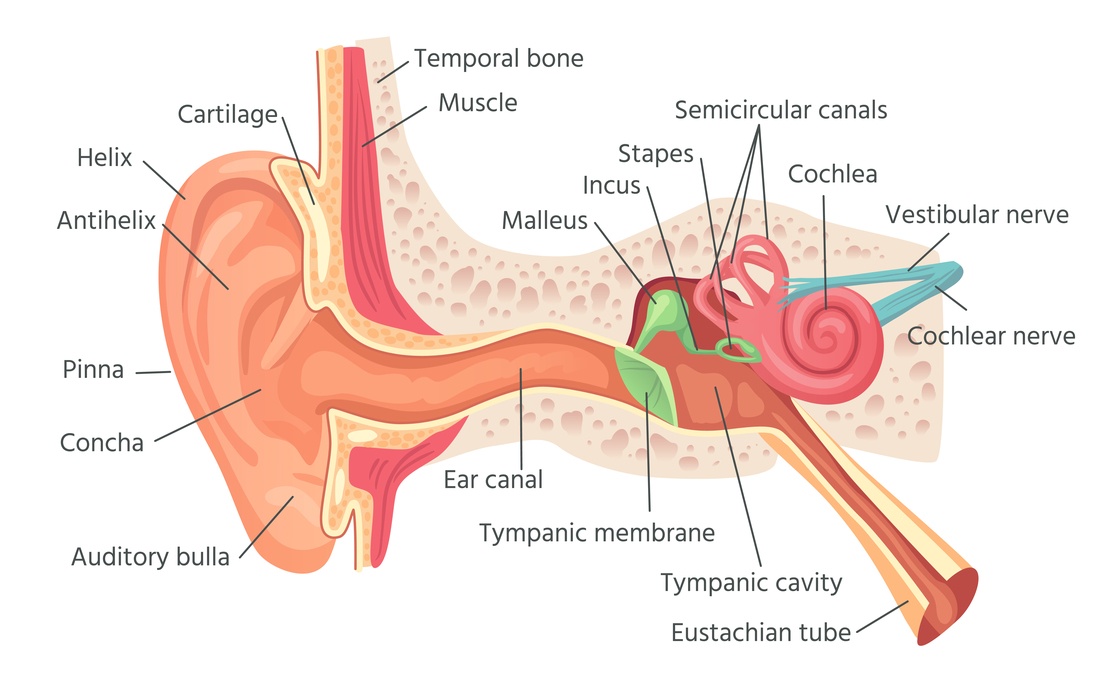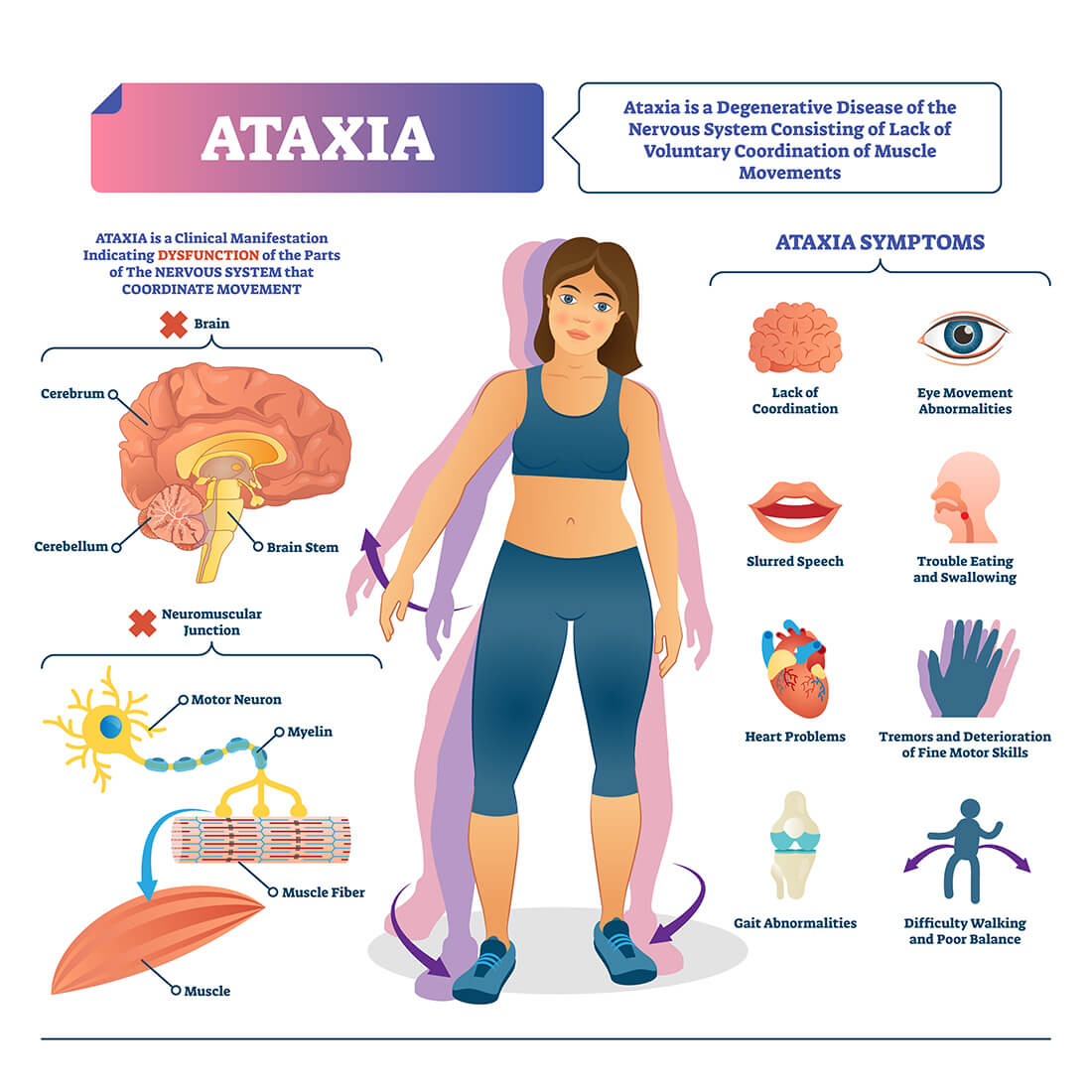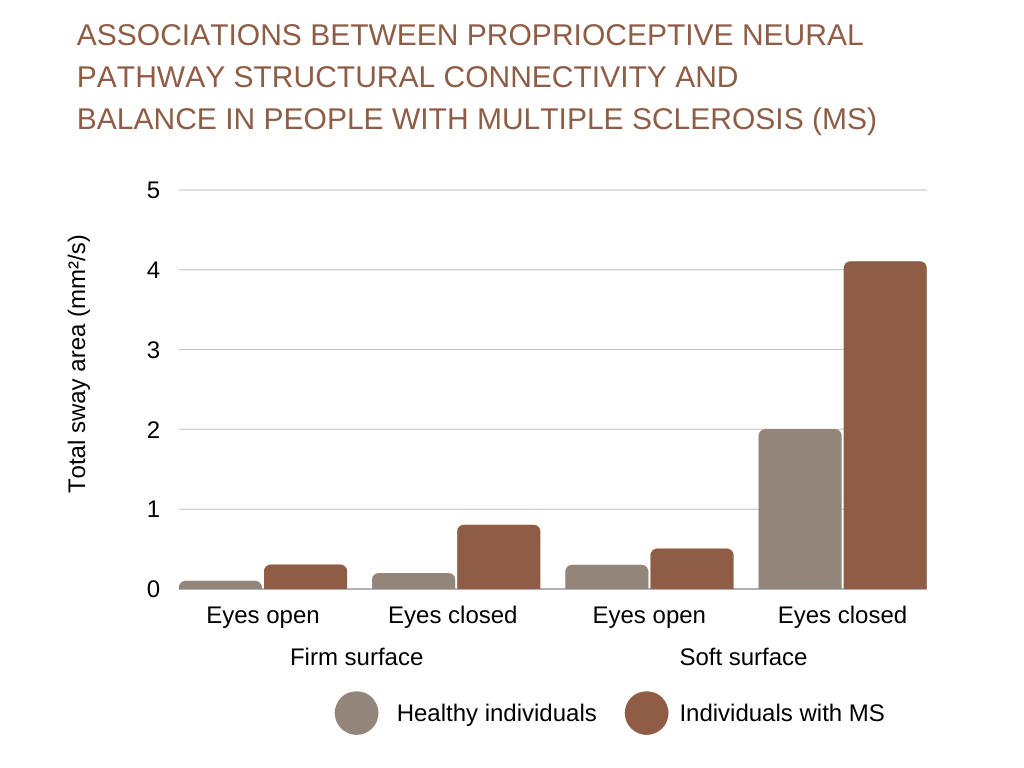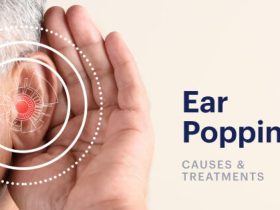You’ve had occasional moments of dizziness, confusion, and maybe a fall recently, and you don’t know how serious your symptoms could be. There’s a simple balance test that will get you the answers you’re looking for: The Romberg test.
Learn how a Romberg test is used, the causes of imbalance, and the symptoms you should be on the lookout for to determine your next steps.
Key Takeaways
- Romberg’s test existed for over 150 years initially to diagnose tabes dorsalis, a syphilis-related disease.
- There are seven senses in the human body, and the last two (proprioception and vestibular) are responsible for balance and coordination.
- Over 8 million adults in the US report balance disorders each year [1].
- 1/3 of adults over 65 and half of adults 75 and older experience balance-related falls [2].
- Cerebellar ataxia, a neurological imbalance disorder, affects 150,000 people in the US [3].
What Is the Romberg Test Used For?
The Romberg, also called the Romberg Sign or Romberg Maneuver, is a neurological assessment used to evaluate an individual’s standing balance.
Balance tests of this kind are for patients with coordination problems, involuntary body movement, dizziness, difficulty standing/sitting upright, and can help determine the gait index, which is the likelihood of someone falling. The gait index is especially important in the US where fall deaths have been on the increase.
Assessing Intoxicated Drivers
Law enforcement officials use a modified version of Romberg’s test to establish the intoxication of a driver. A positive result could inform the officer if the person is too drunk to be handling a motorized vehicle.
There are a total of five types of field sobriety tests administered by law enforcement.
- Horizontal gaze nystagmus (HGN) – A test that monitors your eyes’ activity by following the direction of the officer’s finger.
- Walk and turn – A stability assessment that demonstrates the ability to follow directions as you walk heel to toe in a straight line.
- One-legged stand test – This is to evaluate your ability to balance with no support and one leg slightly off the ground. The subject will keep their eyes open while counting from one to ten.
- Finger to nose – One variation of this examination has the individual stand with their feet together and eyes open or closed while extending their arm and touching their nose repeatedly.
- Romberg – During the field assessment, the Romberg is somewhat different from the procedure performed in a doctor’s office. This version has the individual stand with their shoes on, feet together, eyes closed, head tilted back, and hands to their side with no added support for 30 seconds.
Understanding Imbalance and Ataxia
There are three systems in the body responsible for balance:
- Visual System – What we see when our eyes are open.
- Proprioception System – This is our body’s sense of mobility and spatial awareness. The dorsal column carries proprioceptive information, which helps us to sense movement, heaviness, and force in our limbs.
- Vestibular System – Also called the inner ear, the vestibular acts as our body’s internal GPS, giving information on head positioning, if we are moving, how fast, and in what direction.
Symptoms of imbalance include:
- Sense of spinning or motion (vertigo).
- Lightheadedness.
- Feeling faint.
- Unsteadiness.
- A floating sensation.
- Feeling you might fall or actually falling.
- Confusion.
- Vision changes/blurriness.
The Role of the Vestibular System in Balance
The vestibular, also known as your inner ear, is a crucial part of ear anatomy and includes a portion of the nervous system responsible for processing sensory information. This sensory system provides the brain information on balance, head positioning, motion, spatial orientation, and motor functions that help with stability and posture.
Since the ear is so key to balance, it’s no wonder that some conditions that cause imbalance also cause hearing loss. Common examples include Ménière’s disease and labyrinthitis. In cases where you suffer imbalance, testing for hearing loss may help focus on the cause. Here’s an accurate free online hearing test.
Inside the inner ear is the vestibular labyrinth, which contains three semicircular canal-like tubes filled with a liquid called endolymph. The flow of endolymph through the canal detects head movement—nodding up and down, shaking side to side, and tilting left to right.
The vestibular function and proprioception enable each other to control body awareness and balance. Romberg test results with a positive outcome could mean a problem in either one of these systems resulting in ataxia or vestibular disease.
Some people turn to ear candling or other at-home solutions, hoping to resolve their imbalance symptoms. However, the only way to treat balance impairment is to visit a licensed healthcare professional. Very often, the ear is to blame for common imbalance problems. Find an audiologist near you and pay their clinic a visit for a thorough test.
Causes of Imbalance or Ataxia
Ataxia is the lack of muscle control due to damaged nerves, injury to the spinal cord, or illness. There are three types of ataxia:
- Cerebellar (brain).
- Vestibular (ears).
- Sensory ataxia (nerves).
Mild brain lesions may also cause ataxia resulting in a degenerative nervous system condition affecting the cerebellum.
The cerebellum manages coordinated motions like walking, sitting, limb coordination, eye movement, vision, and speech. Damage to the cerebellum through ataxia can closely mimic the effects of being drunk [4].
The following are common conditions that cause ataxia and how they could manifest.
- Hereditary – A damaged gene inherited from one or both parents.
- Acquired – Alcohol abuse, vitamin B12 deficiency, exposure to toxic chemicals.
- Infection – Meningitis, chickenpox, measles.
- Injury – Head or spinal cord damage from a car crash or severe fall.
- Disease – Cancer, lymphoma, posterior column disease, vestibular disease.
- Changes in the central nervous system – Multiple sclerosis, cerebral palsy, stroke.
How Do You Perform a Romberg Test?
A Romberg performed in a doctor’s office will be a simple examination on level ground with no equipment and no physical support from the examiner. This is completed in two stages.
Stage I
The first stage begins with the patient removing their shoes and standing with their feet together. Their arms are either folded against their chest or down by their side with their eyes open.
The patient holds this stance for 30 seconds.
During this time, the examiner will monitor your stability, looking to see if you’re swaying or if you need to move your arms or feet to maintain balance.
Stage II
The patient will remain standing with their feet together. Their arms will stay crossed in front of them or down by their side and their eyes closed. The patient holds this stance for 30 seconds.
The healthcare professional should be near in case of significant swaying or falls but should not touch the individual. They will then examine the patient for any motion for the duration of the assessment.
In some cases, the examiner will ask you to hold the position for longer than 30 seconds. It’s possible to have this test done by an audiologist.
How Is the Romberg Test Scored?
The Romberg test is scored by counting the seconds a patient can stand without moving any part of their body for the duration of the assessment.
There are only two outcomes of Romberg’s test, positive and negative.
What Does a Positive Romberg Test Indicate?
A positive Romberg result occurs when the patient sways, moves their arms or feet, or falls with their eyes closed during the balance test. This could indicate a problem in one of three areas:
- Proprioception.
- Sensory.
- Vestibular.
What Does a Negative Romberg Test Mean?
Patients that don’t exhibit any signs of imbalance with their eyes closed during testing have a negative test result. Another examination may be needed to determine the exact medical condition that is causing the imbalance issues.
What Is the Romberg Sign?
The Romberg sign occurs during testing when a patient can stay motionless with their eyes open, but sway or fall out of a standing position while their eyes are closed.
Is the Romberg Test Accurate?
As long as the patient can follow directions and the examination is done correctly, the results are accurate in detecting proprioception impairment.
However, patients with severe cerebellar ataxia and unable to balance even with their eyes open cannot complete a Romberg. Therefore, that individual is not considered Romberg positive even though they have proprioception impairment.
Romberg FAQ
We want to make sure you have all the information you need in this article, so we scoured the internet for questions that others ask about the Romberg test.
Does Losing Balance Mean I Need a Romberg Test?
If you have steadiness and coordination problems, dizziness, and/or falling, Romberg’s test assessment may give your doctor clues about your diagnosis.
What Is the Modified Romberg Test?
The modified Romberg is a field sobriety examination administered by law enforcement to gauge whether a person is intoxicated. It differs from the Romberg test in the following ways.
- The subject will stand with their feet together, hands by their side, and their head tilted back.
- During this time, the person will keep their eyes closed for 30 seconds.
- When the subject believes the 30-second time frame is over, they will look forward and say “stop.”
Unlike the original Romberg given by a medical professional, the modified examination does not have formal guidelines on administering the test or the general scoring.
Does Romberg Test for MS?
Yes. Loss of proprioception is commonly found in people with multiple sclerosis.
Is Romberg a Cerebellar Test?
No. The cerebellar test is a series of assessments, including a physical exam, neurological, hearing, memory, reflexes, and concentration tests. A Romberg may be a part of a cerebellar test, but they are not the same.
What Is Tandem Romberg?
The Tandem or sharpened Romberg test is a stance used for a modified version of the Romberg test. This position consists of one foot directly in front of the other, with the front foot’s heel touching the back foot’s toe. The procedure of the original Romberg continues with the new footing.
Your doctor may ask you to switch the position of your feet during the examination.
What Is Tandem Gait?
This is a test much like the tandem or sharpened Romberg test where the feet are in the heel-to-toe position. The doctor will then ask you to walk one foot in front of the other.
Conclusion
Romberg examinations are simple mobility tests designed to assess your balance and coordination, which can determine the presence of a neurological disorder or other injuries.
There are only two conclusions to a Romberg test, positive and negative. Still, a negative result can give doctors the information needed to move forward with a medical diagnosis.
Loss of balance can affect anyone at any time so make sure to consult with a healthcare professional about any question regarding your inner ear or if you notice problems with coordination and/or falling.
References
- “Balance Problems and Disorders.” National Institute on Aging, U.S. Department of Health and Human Services, www.nia.nih.gov/health/balance-problems-and-disorders.
- “Important Facts about Falls.” Centers for Disease Control and Prevention, Centers for Disease Control and Prevention, 10 Feb. 2017, www.cdc.gov/homeandrecreationalsafety/falls/adultfalls.html.
- Ashizawa, Tetsuo, and Guangbin Xia. “Ataxia.” Continuum (Minneapolis, Minn.), Lippincott Williams & Wilkins, Aug. 2016, www.ncbi.nlm.nih.gov/pmc/articles/PMC5567218/.
- “What Is Ataxia?” National Ataxia Foundation, 10 Sept. 2020, ataxia.org/what-is-ataxia/#:~:text=Ataxia%20is%20a%20degenerative%20disease,is%20responsible%20for%20coordinating%20movement.









Leave a Reply